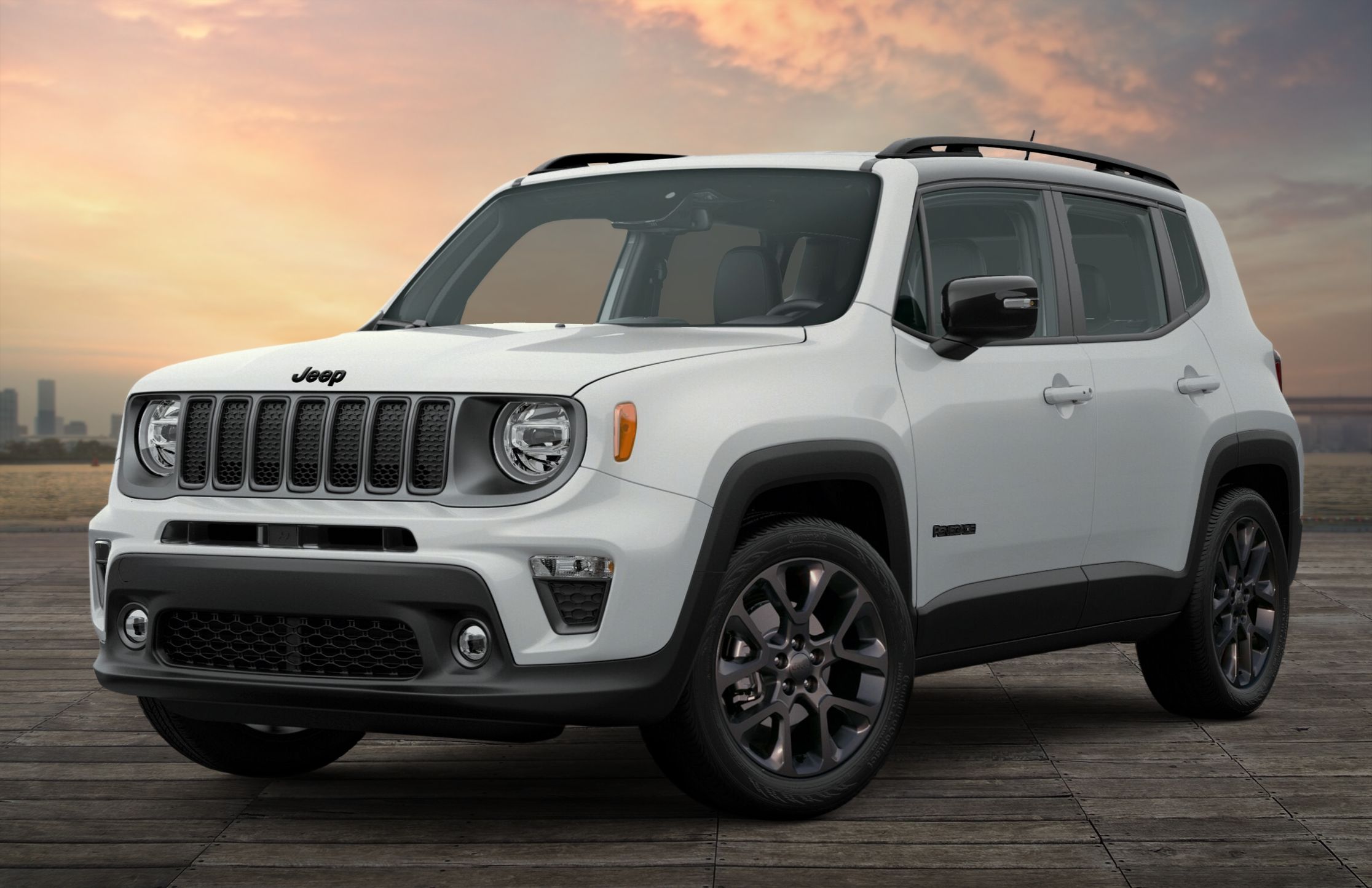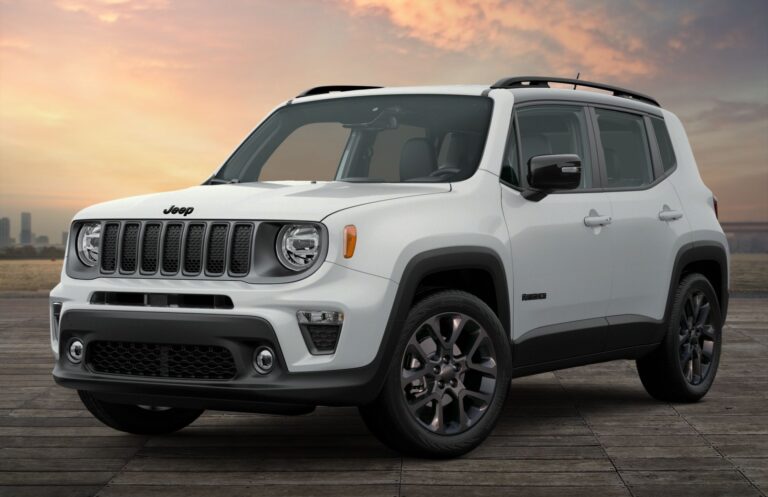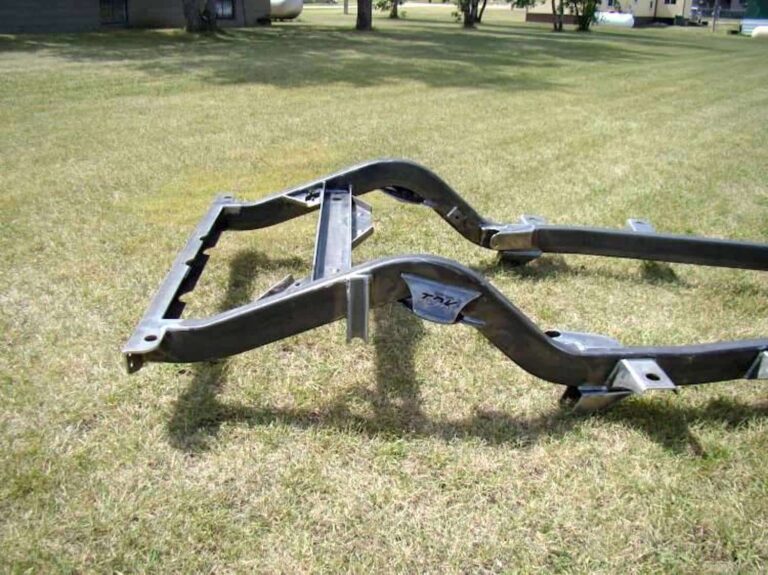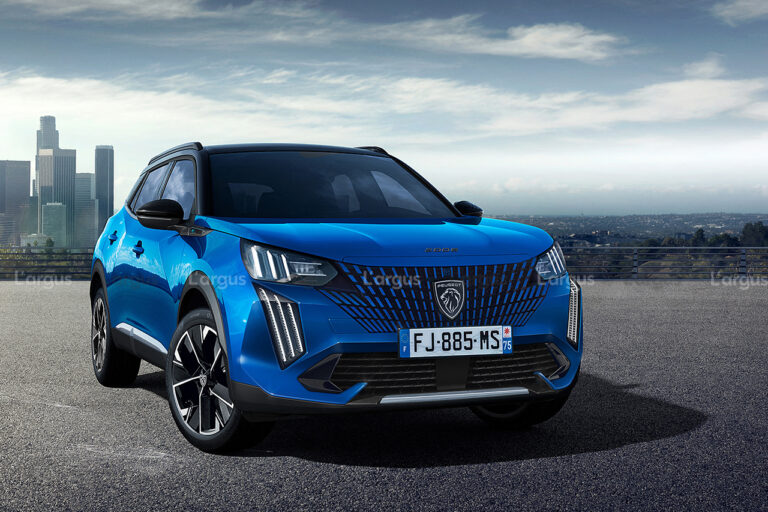Jeep TJ Bumpers For Sale: Your Ultimate Guide to Protection, Performance, and Style
Jeep TJ Bumpers For Sale: Your Ultimate Guide to Protection, Performance, and Style jeeps.truckstrend.com
The Jeep TJ Wrangler (1997-2006) holds a special place in the hearts of off-road enthusiasts and daily drivers alike. Known for its rugged reliability, iconic design, and legendary off-road prowess, the TJ remains a highly sought-after vehicle. While the stock TJ is capable, owners often seek to enhance its performance, protection, and aesthetic appeal. Among the most crucial upgrades, and often the first, are aftermarket bumpers. Far more than just cosmetic additions, Jeep TJ bumpers for sale offer enhanced protection, improved recovery options, better approach and departure angles, and a sturdy platform for mounting essential off-road accessories.
This comprehensive guide will delve deep into the world of Jeep TJ bumpers, exploring their types, benefits, key considerations for purchase, and practical advice to help you navigate the market and make an informed decision. Whether you’re a seasoned trail veteran looking for the ultimate in armor or a new TJ owner seeking to upgrade from a flimsy factory bumper, understanding the options available is the first step towards transforming your rig.
Jeep TJ Bumpers For Sale: Your Ultimate Guide to Protection, Performance, and Style
Understanding Jeep TJ Bumpers: More Than Just Metal
At its core, a bumper is designed to absorb impact and protect the vehicle’s critical components. For a Jeep TJ, however, the role of a bumper extends far beyond simple collision protection. Aftermarket bumpers are engineered to withstand the rigors of off-road driving, providing structural integrity against rocks, trees, and other trail hazards.
Why Upgrade Your TJ Bumper?
- Enhanced Protection: Stock bumpers are often made of thin sheet metal and plastic, offering minimal protection. Aftermarket bumpers, typically constructed from heavy-gauge steel or aluminum, provide robust defense for your frame, radiator, and other vital front-end or rear-end components.
- Improved Recovery Options: Most aftermarket bumpers come equipped with integrated D-ring shackle mounts, essential for vehicle recovery. Front bumpers often feature a dedicated winch plate, allowing for the secure mounting of a recovery winch.
- Better Approach and Departure Angles: Stock bumpers can hinder off-road performance by limiting your approach (front) and departure (rear) angles, causing you to scrape or get hung up on obstacles. Aftermarket designs, especially stubby or high-clearance options, significantly improve these angles.
- Accessory Mounting: Bumpers serve as ideal mounting points for auxiliary lighting, high-lift jacks, and, for rear bumpers, oversized spare tires, fuel cans, or even bike racks.
- Aesthetics and Personalization: Upgrading your bumpers instantly changes the look of your TJ, giving it a more aggressive, capable, or custom appearance that reflects your individual style.

Types of Jeep TJ Bumpers For Sale
The market offers a vast array of Jeep TJ bumpers, each designed with specific purposes and aesthetics in mind. They can be broadly categorized into front and rear bumpers, with further subdivisions based on their design and features.
Front Bumpers
- Stubby Bumpers: These are short and narrow, typically not extending past the width of the grille. They are popular for extreme off-roading as they offer the best approach angle and minimal obstruction, reducing the chances of catching on rocks or obstacles. They often include a winch plate and D-ring mounts.
- Mid-Width Bumpers: A compromise between stubby and full-width, these bumpers extend slightly past the grille but not to the full width of the fenders. They offer a good balance of protection, approach angle, and aesthetics, often featuring light tabs and winch mounts.
- Full-Width Bumpers: These bumpers extend across the entire width of the TJ’s front end, providing maximum protection for the fenders and grille. While they offer superior protection, they can sometimes slightly impede approach angles compared to narrower options. They almost always include winch mounts and D-ring tabs.
- Winch Bumpers: While many bumper types are "winch-ready," a dedicated winch bumper is specifically designed to house and protect a recovery winch, often with a reinforced plate and fairlead mounts.
- Grille Guards/Stinger Bumpers: These designs incorporate an upright hoop or "stinger" that extends forward and upward from the main bumper body. They provide additional protection for the grille and radiator, prevent nose-overs on steep descents (stingers), and offer an aggressive look.
Rear Bumpers
- Standard Rear Bumpers: These are direct replacements for the factory bumper, offering improved protection and often incorporating D-ring mounts and a receiver hitch for towing or recovery.
- Rear Bumpers with Tire Carrier: As you upgrade to larger tires (33 inches or more), the factory tailgate-mounted spare tire carrier often cannot handle the weight, leading to tailgate damage. Bumpers with integrated tire carriers are essential. These typically swing out, allowing access to the tailgate. They are built to handle heavy loads and often include provisions for a high-lift jack, fuel cans, or auxiliary lights.
- Rear Bumpers with Recovery Points: Similar to front bumpers, these prioritize integrated, heavy-duty D-ring shackle mounts for rear-end recovery. Many also include a robust receiver hitch.
- Bumper and Corner Armor Combos: For maximum rear-end protection, some systems combine the rear bumper with integrated corner armor that wraps around the TJ’s rear quarter panels, protecting them from trail damage.
Key Features and Considerations When Buying Jeep TJ Bumpers
Choosing the right bumper involves more than just picking one that looks good. Several critical factors should influence your decision:
- Material and Construction:
- Steel: The most common material, offering superior strength and durability. Plate steel (cut and welded) is incredibly strong, while tubular steel (bent pipes) offers a lighter but still robust option. Steel is heavier and prone to rust if the finish is compromised.
- Aluminum: Lighter than steel (often 50% less weight), which benefits fuel economy, ride quality, and reduces strain on the suspension. Aluminum is also naturally rust-resistant. However, it is typically more expensive and can be less impact-resistant than steel in extreme situations.
- Finish: Most steel bumpers come with a durable powder-coat finish (matte black, textured black, or glossy). This protects against corrosion. Some are sold as "bare metal" for custom painting or powder-coating.
- Recovery Points: Ensure the bumper has robust, welded D-ring shackle mounts. A built-in receiver hitch on the rear bumper is also highly beneficial for towing and various recovery accessories.
- Winch Compatibility (Front): If you plan to run a winch, confirm the bumper has a dedicated, reinforced winch plate and fairlead mounting holes.
- Light Mounts: Many bumpers include tabs or cutouts for mounting auxiliary lights (fog lights, driving lights, LED light bars).
- Tire Carrier Capacity (Rear): If opting for a tire carrier, verify its weight capacity to ensure it can safely support your chosen tire size and wheel combination. Look for adjustable carriers to accommodate different tire widths and backspacing.
- Approach/Departure Angles: Consider how the bumper design will impact your vehicle’s angles, especially if you tackle challenging off-road trails.
- Installation: Most aftermarket TJ bumpers are designed as direct bolt-on replacements, requiring basic hand tools. However, some heavy-duty options may require minor drilling or modification. Always check the manufacturer’s installation instructions and assess your DIY comfort level.
- Budget: Bumper prices vary significantly based on material, brand, features, and complexity. Set a realistic budget before you start shopping.
Where to Find Jeep TJ Bumpers For Sale
The market for TJ bumpers is robust, with numerous reputable sources:
- Online Retailers: Large online retailers specializing in Jeep parts like Quadratec, ExtremeTerrain, Morris 4×4 Center, Northridge4x4, and 4 Wheel Parts offer extensive selections from various brands, often with competitive pricing and detailed product descriptions.
- Manufacturer Websites: Many top brands (e.g., Poison Spyder, LOD Offroad, Warn, ARB, JCR Offroad, Smittybilt) sell directly from their websites, sometimes offering unique bundles or new releases.
- Local Off-Road Shops: These brick-and-mortar stores can offer personalized advice, installation services, and the opportunity to see bumpers in person.
- Used Market: Websites like Craigslist, Facebook Marketplace, and dedicated Jeep forums can be great places to find used bumpers at a discounted price. Always inspect used items for damage, rust, or bends before purchasing.
General Installation Tips for Jeep TJ Bumpers
While professional installation is always an option, many TJ owners choose to install their bumpers themselves. Here are some general tips:
- Safety First: Always work on a level surface. Use jack stands if you need to lift the vehicle, and disconnect the battery, especially if you’re dealing with lights or a winch.
- Gather Tools: You’ll typically need a socket set, wrenches, a torque wrench, possibly a grinder or drill for some applications, and a second pair of hands for heavy bumpers.
- Remove Old Bumper: This usually involves unbolting the existing bumper from the frame. If you have a factory fog light harness, unplug it.
- Test Fit: Before fully tightening, loosely bolt the new bumper into place to ensure proper alignment and fitment.
- Torque Bolts: Once aligned, torque all bolts to the manufacturer’s specified settings. This is crucial for safety and structural integrity.
- Wiring: If your new bumper includes light mounts or a winch, ensure all wiring is properly routed, secured, and connected to prevent shorts or damage.
Challenges and Solutions
- Weight Impact: Heavy steel bumpers can add significant weight, potentially causing your TJ’s front or rear end to sag, especially if combined with other heavy accessories like a winch or large spare tire.
- Solution: Consider upgrading your suspension with heavier-duty springs or a lift kit designed to accommodate the added weight.
- Rust: Even powder-coated steel can rust if the coating is chipped or scratched.
- Solution: Opt for high-quality powder coating, touch up chips promptly with rust-inhibiting paint, or consider an aluminum bumper. Regular cleaning also helps.
- Fitment Issues: Occasionally, aftermarket parts can have minor fitment discrepancies.
- Solution: Purchase from reputable brands with good reviews. Check return policies before buying. Sometimes, minor filing or adjustment may be needed.
- Shipping Costs: Large, heavy bumpers can incur substantial shipping fees.
- Solution: Factor shipping into your budget. Look for retailers offering free or discounted shipping, or consider local pickup if available.
Practical Advice and Actionable Insights
- Define Your Needs: Are you a hardcore rock crawler, a weekend overlander, or a daily driver who occasionally hits light trails? Your intended use will dictate the type, material, and features you need.
- Set a Realistic Budget: Bumper prices range widely. Prioritize features that are essential for your needs and budget accordingly. Remember to factor in potential shipping costs and installation if you’re not DIY.
- Read Reviews and Research Brands: Not all bumpers are created equal. Look for brands known for their quality, durability, and customer support. Read user reviews and watch installation videos.
- Consider Future Upgrades: If you plan to add a winch later, buy a "winch-ready" bumper now. If you anticipate larger tires, invest in a tire carrier bumper from the start. Planning ahead saves money and effort.
- Don’t Compromise on Safety: Your bumper is a critical safety component. Avoid cheap, flimsy options that might not protect your vehicle or passengers in an impact.
Price Table: Jeep TJ Bumpers For Sale – Estimated Costs
This table provides estimated price ranges for common types of Jeep TJ bumpers. Prices can vary significantly based on brand, material, specific features, retailer sales, and market fluctuations.
| Bumper Type (Front/Rear, Style) | Key Features | Material | Estimated Price Range (USD) | Common Brands |
|---|---|---|---|---|
| Front Bumpers | ||||
| Stubby Front | Winch ready, D-ring mounts, improved approach | Steel (plate/tube) | $250 – $600 | Smittybilt, Rugged Ridge, Barricade, Rough Country |
| Mid-Width Front | Winch ready, D-ring mounts, light tabs, moderate protection | Steel (plate/tube) | $400 – $800 | Poison Spyder, ARB, Warn, Bestop |
| Full-Width Front | Max fender protection, winch ready, D-ring mounts, light tabs | Steel (plate/tube) | $500 – $1000 | LOD Offroad, Body Armor 4×4, JCR Offroad |
| Stinger/Grille Guard Front | Winch ready, D-ring mounts, extreme front-end protection | Steel (tube) | $350 – $750 | Rock Hard 4×4, Rampage, EAG |
| Rear Bumpers | ||||
| Standard Rear | D-ring mounts, hitch receiver compatible | Steel (plate) | $200 – $500 | Smittybilt, Rugged Ridge, Barricade |
| Rear with Tire Carrier (Swing-Out) | Integrated tire carrier (up to 37"), D-ring mounts, hitch receiver | Steel (plate/tube) | $600 – $1500 | LOD Offroad, Poison Spyder, JCR Offroad, TeraFlex |
| Rear with Recovery Points | D-ring mounts, often includes hitch receiver | Steel (plate/tube) | $300 – $700 | ARB, Warn, GenRight |
| Rear Bumper & Corner Armor Combo | Maximum rear protection, D-ring mounts, often tire carrier compatible | Steel (plate) | $800 – $1800 | Savvy Off Road, MetalCloak |
Frequently Asked Questions (FAQ) About Jeep TJ Bumpers
Q: Do I need a special bumper for a winch?
A: Yes. If you plan to install a winch, you’ll need a "winch-ready" or "winch bumper." These bumpers have a reinforced plate designed to hold the weight and torque of a winch, along with mounting holes for the winch and fairlead.
Q: Can I install a TJ bumper myself?
A: Most aftermarket TJ bumpers are designed for DIY installation, typically bolting directly to the frame. Basic hand tools are usually sufficient. However, heavy bumpers may require a second person for safety and ease of installation. Always refer to the manufacturer’s specific instructions.
Q: Will a new bumper affect my ride quality?
A: A significantly heavier steel bumper can add noticeable weight to your Jeep, potentially causing the front or rear end to sag. This can impact ride quality and handling. If you’re adding substantial weight, consider upgrading your suspension with heavier-duty springs or a mild lift kit to compensate.
Q: What’s the difference between stubby, mid-width, and full-width front bumpers?
A: These terms refer to the bumper’s width:
- Stubby: Narrowest, extending only as wide as the grille. Maximizes approach angle.
- Mid-Width: A compromise, extending slightly beyond the grille but not to the full width of the fenders.
- Full-Width: Widest, extending the full width of the fenders. Offers maximum protection but can slightly reduce approach angles.
Q: Are aluminum bumpers worth the extra cost?
A: For many, yes. Aluminum bumpers are significantly lighter than steel, which can improve fuel economy, reduce wear on suspension components, and maintain a better ride quality, especially if you’re not upgrading your suspension. They are also naturally rust-resistant. The higher upfront cost is often offset by these benefits.
Q: Do all TJ bumpers fit all TJ models (e.g., Rubicon, Sport)?
A: Generally, yes. The frame and mounting points for bumpers on all Jeep TJ models (Sport, Sahara, Rubicon, X, SE, etc.) from 1997-2006 are the same. However, always double-check the product description for any specific fitment notes or exclusions.
Q: How do I choose between steel and aluminum?
A: Consider your priorities:
- Steel: Maximum strength and lower cost. Best for extreme rock crawling where direct impacts are common.
- Aluminum: Lighter weight, rust resistance, and better ride quality. Ideal for those who want protection without the weight penalty, or live in rust-prone climates.
Concluding Summary
Upgrading your Jeep TJ’s bumpers is one of the most impactful modifications you can make, transforming its protection, functionality, and visual appeal. From the rugged utility of a winch-ready front bumper to the essential convenience of a tire carrier rear bumper, the options for Jeep TJ bumpers for sale are diverse and cater to every need and budget.
By understanding the different types, carefully considering key features like material and recovery points, and planning your purchase with practical insights, you can confidently select the perfect bumpers to enhance your TJ’s capabilities and make it truly your own. Invest wisely, and your Jeep TJ will be ready to tackle any adventure, looking good while doing it.






